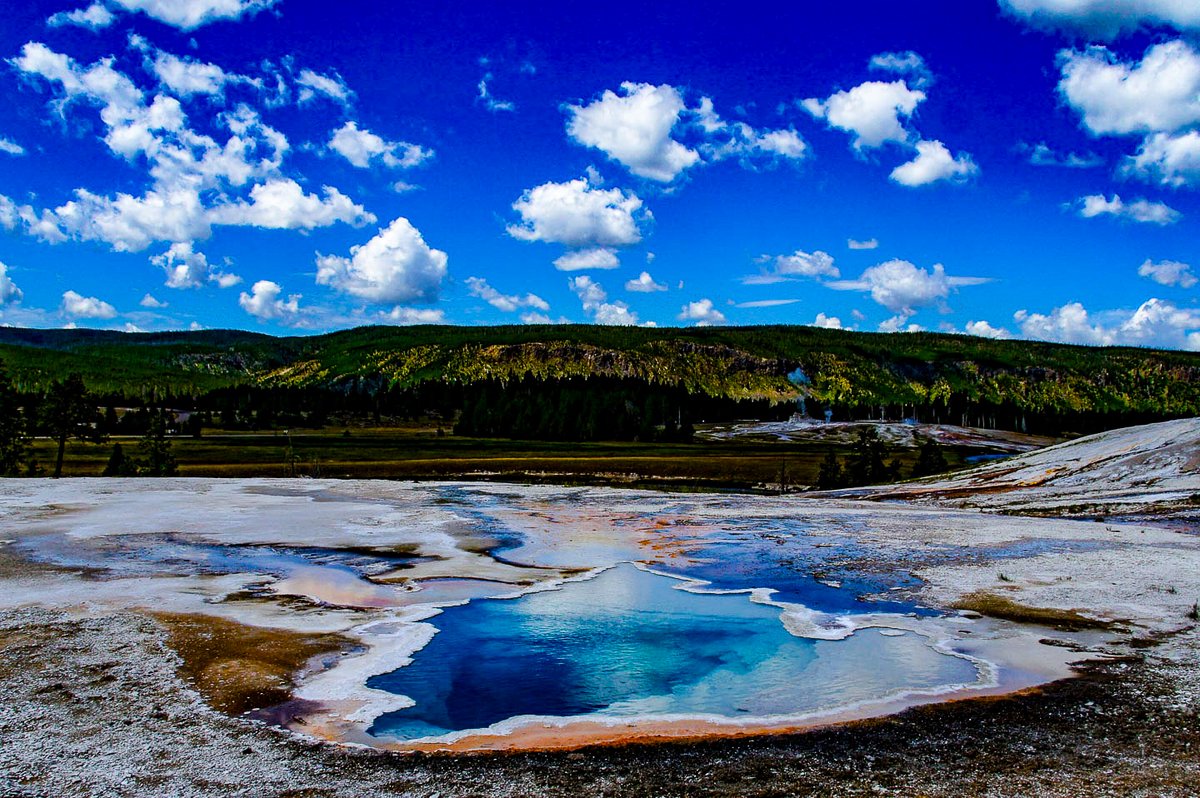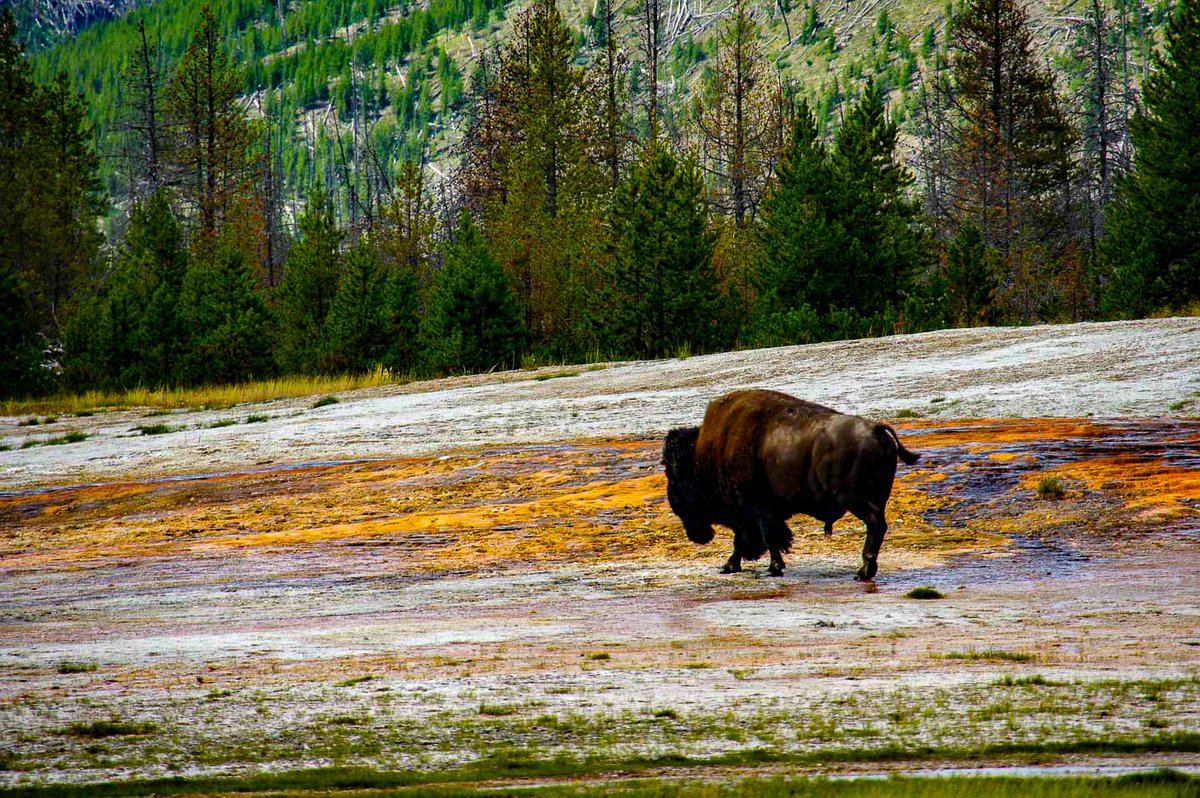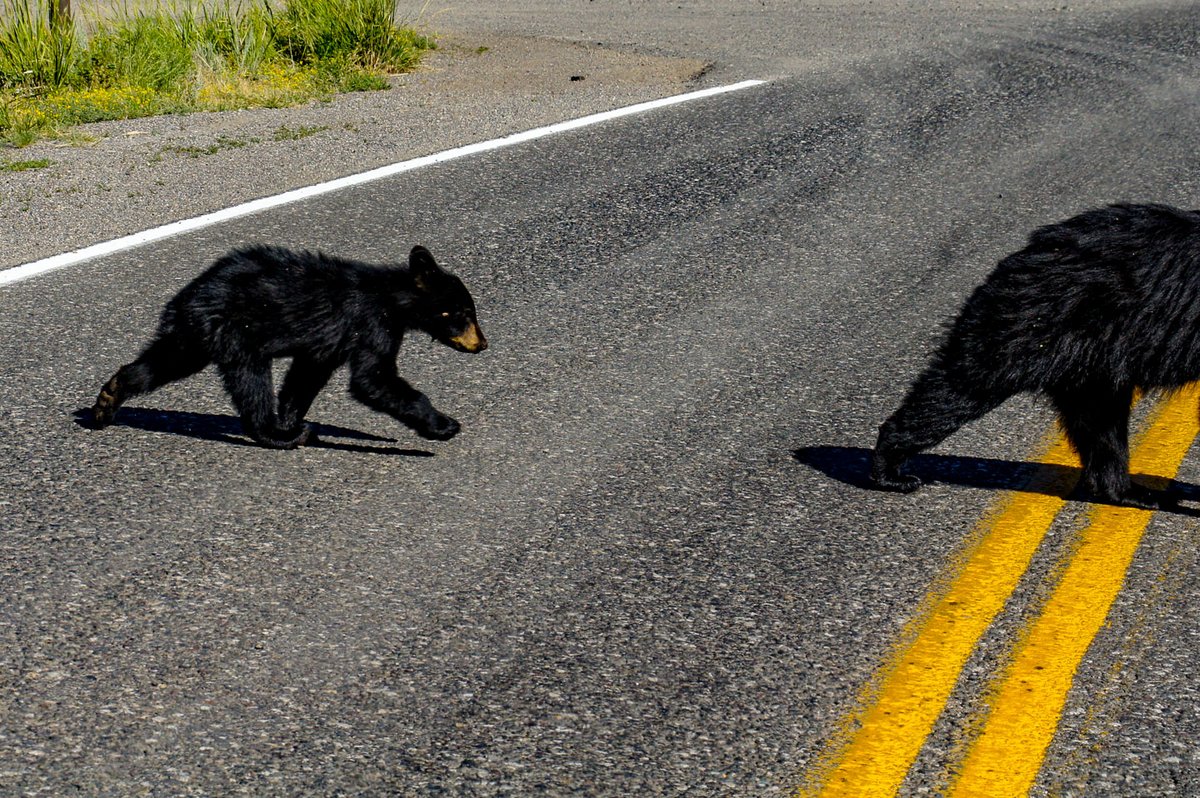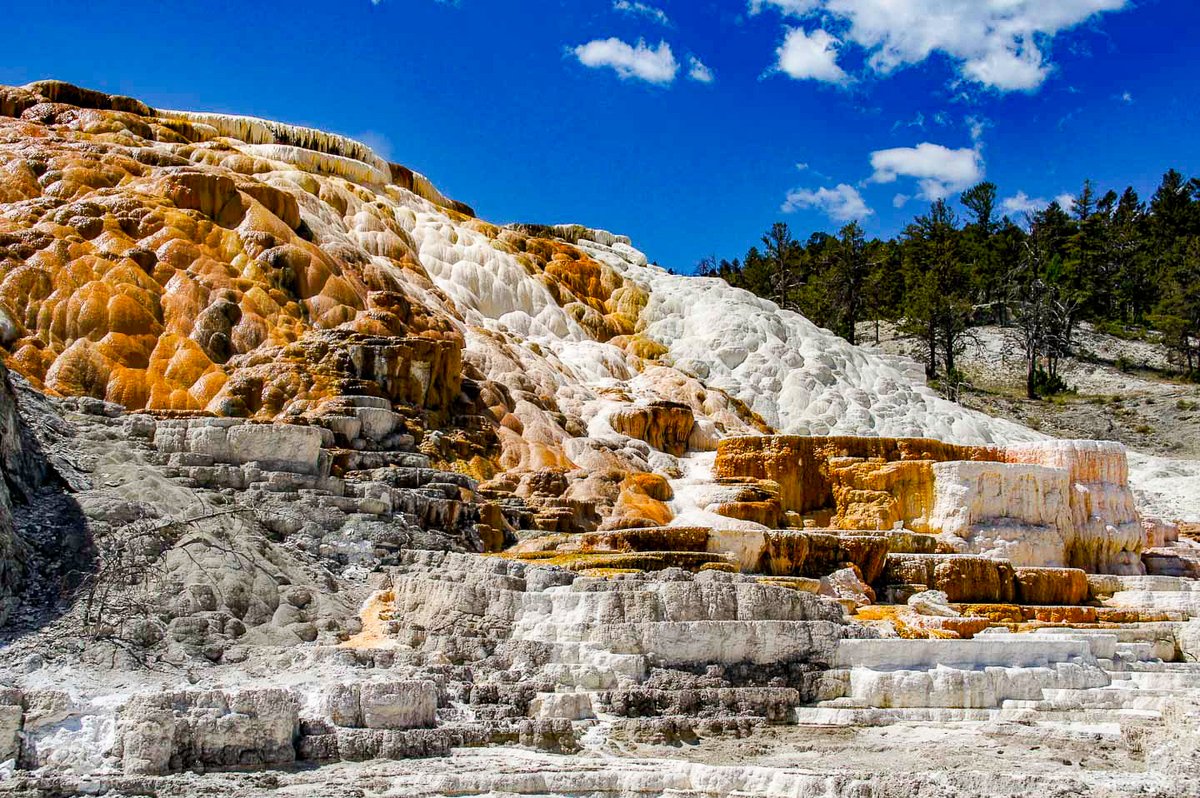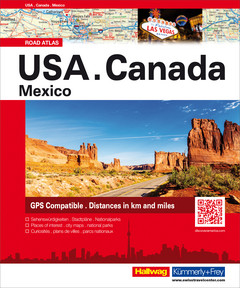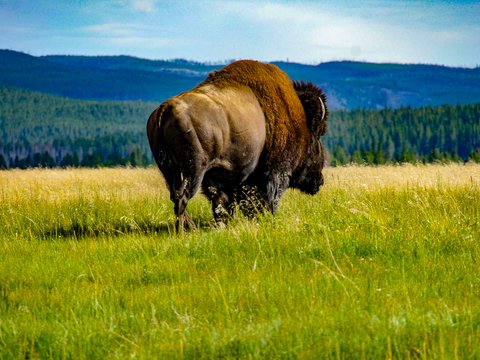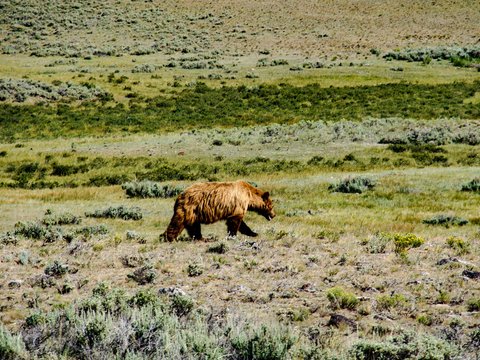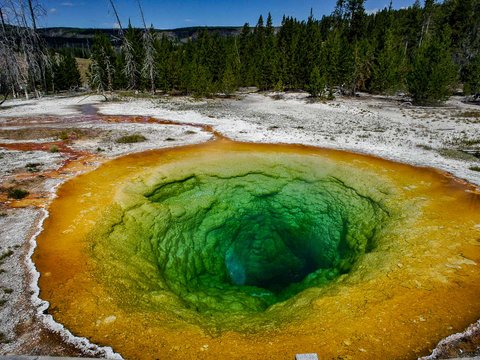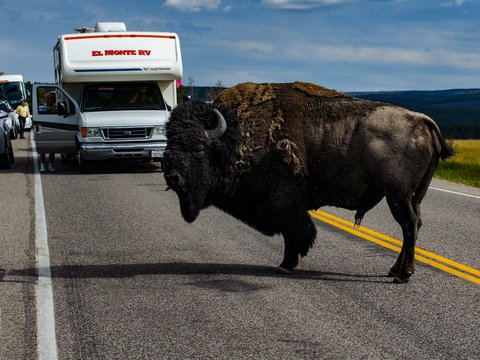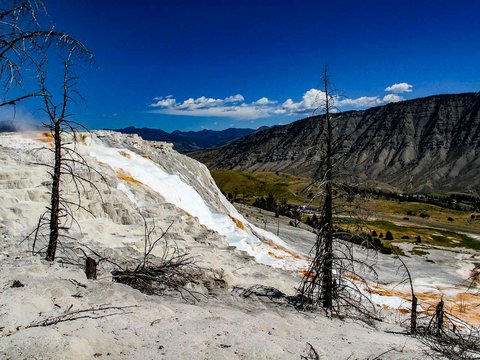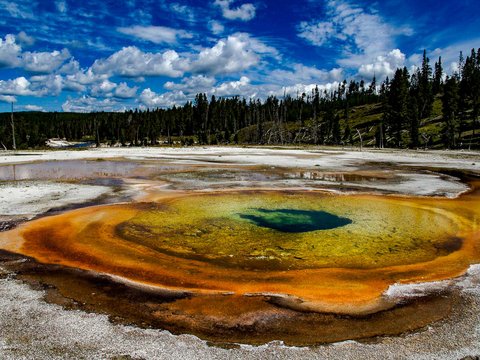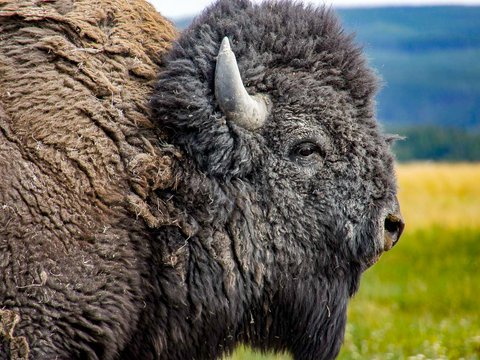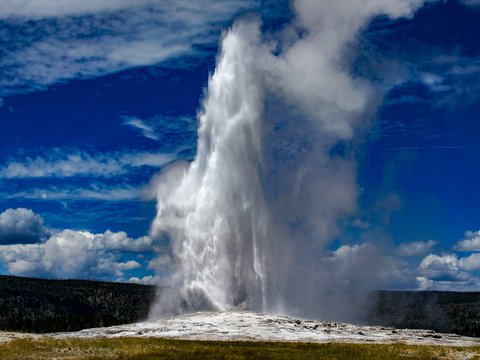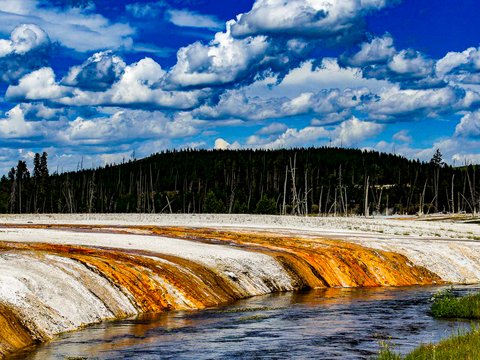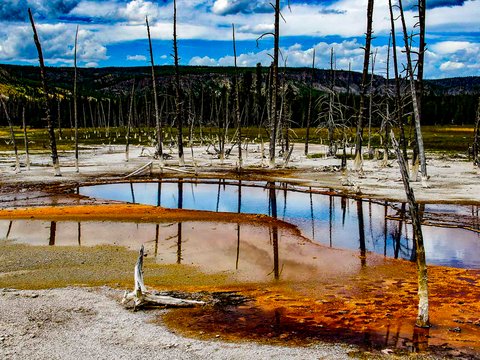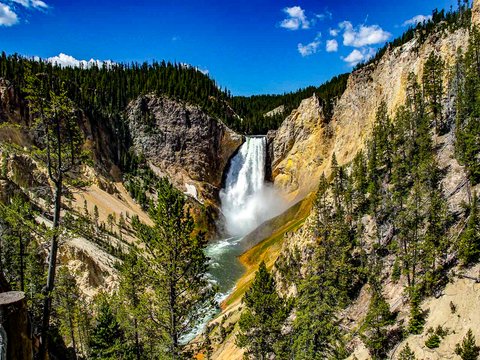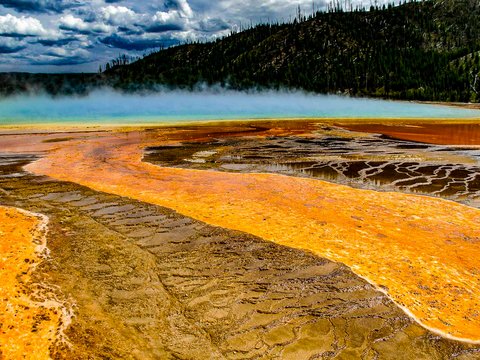Turquoise blue shimmering thermal pools, geysers, bubbling mud pots and a variety of animals - that's what Yellowstone National Park in Wyoming promises. From grizzlies to bison to wolf packs, the park boasts the legendary collection of wildlife of the Lower 48. In addition, there are half the geysers in the world, the country's largest high mountain lake and a wealth of blue rivers and waterfalls.
The Yellowstone National Park was established in 1872 as the world's first national park to preserve the fascinating landscape and unique wildlife. In order to explore the almost 9000km² large park extensively, I recommend a stay of one week and the rental of a rental car or a camper. Thus, the "Grand Loop", which on the map resembles the shape of an eight, can be comfortably driven off and leads to the most spectacular sights. It can also be easily combined with the southern Grand-Teton National Park, which attracts with its jagged mountain peaks and is less crowded in summer. But also in the Yellowstone, one can escape the crowds if one is a little off the beaten track. If you want to visit geysers and hot springs first and foremost, Geyser Country is recommended. Here, "Old Faithful" spits about every one and a half hours up to 32'000 litres up to 55m in height. On the paved path not far from the geyser you can also discover the most beautiful thermal feature of the park: Grand Prismatic Spring. And from time to time there is also a bison, which is not disturbed by the hot fumes and can only rarely be observed in the wild in the USA. The largest herd of wild steppe bison lives in the park itself. Its population is estimated at about 4000 specimens today.
On the way to the Yellowstone Grand Canyon a trip through the Hayden Valley is worthwhile. The chance to meet a grizzly bear is particularly high here. With a little luck you may spot moose, black bears or a coyote. To photograph the canyon and the waterfall, I recommend a hike to Artist Point. Here the waterfall can be photographed particularly beautifully.
In the far north, another thermal sensation attracts visitors: the Mammoth Hot Springs. At the northernmost point of the national park, near the northern entrance and directly on the border to the US state of Montana, hot springs let their warm water of about 70 °Celsius glide over the terraces. The water contains an above-average proportion of limestone and minerals, which precipitate at the source and deposit in the form of terraces. Here, too, plank paths have been laid out to discover the unique landscape. And if you feel even more like spending time actively - how about a kayak tour or a guided fishing tour? The countless brooks, rivers and lakes in a fantastic landscape invite you to do so.
The park can also be easily combined with a larger round trip through western Canada and the cities of Vancouver, the Banff and Jasper National Parks and Calgary. (Or with a round trip through the west of the USA, whereby the long journey is not to be underestimated).

To properly prepare for your trip
How you get there:
with Swiss and United via Chicago to Jackson Hole
How you get around:
by camper (www.besttimerv.com) or rental car
How long should I go:
from 7 days... connect with Canada - or USA round trip
Best travel time:
May to September
Highlights:
geysers, mud pots, hot springs, bears, bisons
Delicious food:
Gun Barrel Steak & Game House
More info:
www.nps.gov/yell
Written by Michael Bachmann
More travel pictures at www.kissed-by-nature.com
